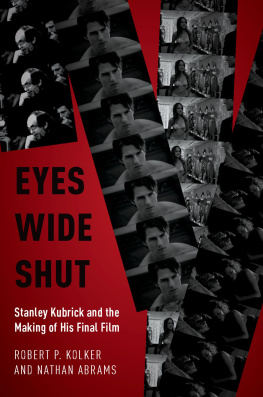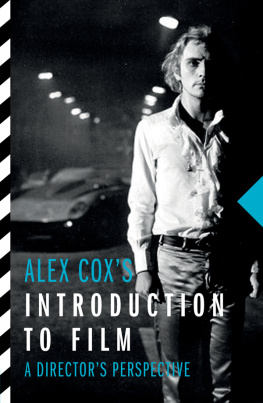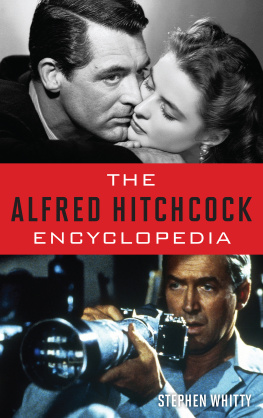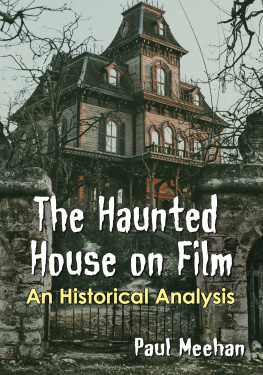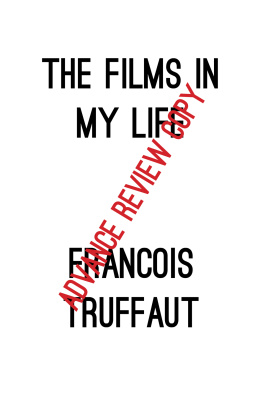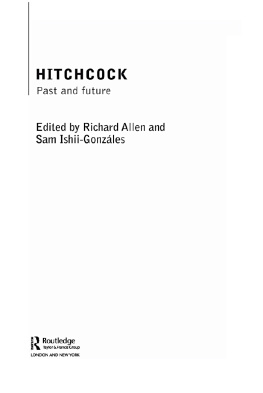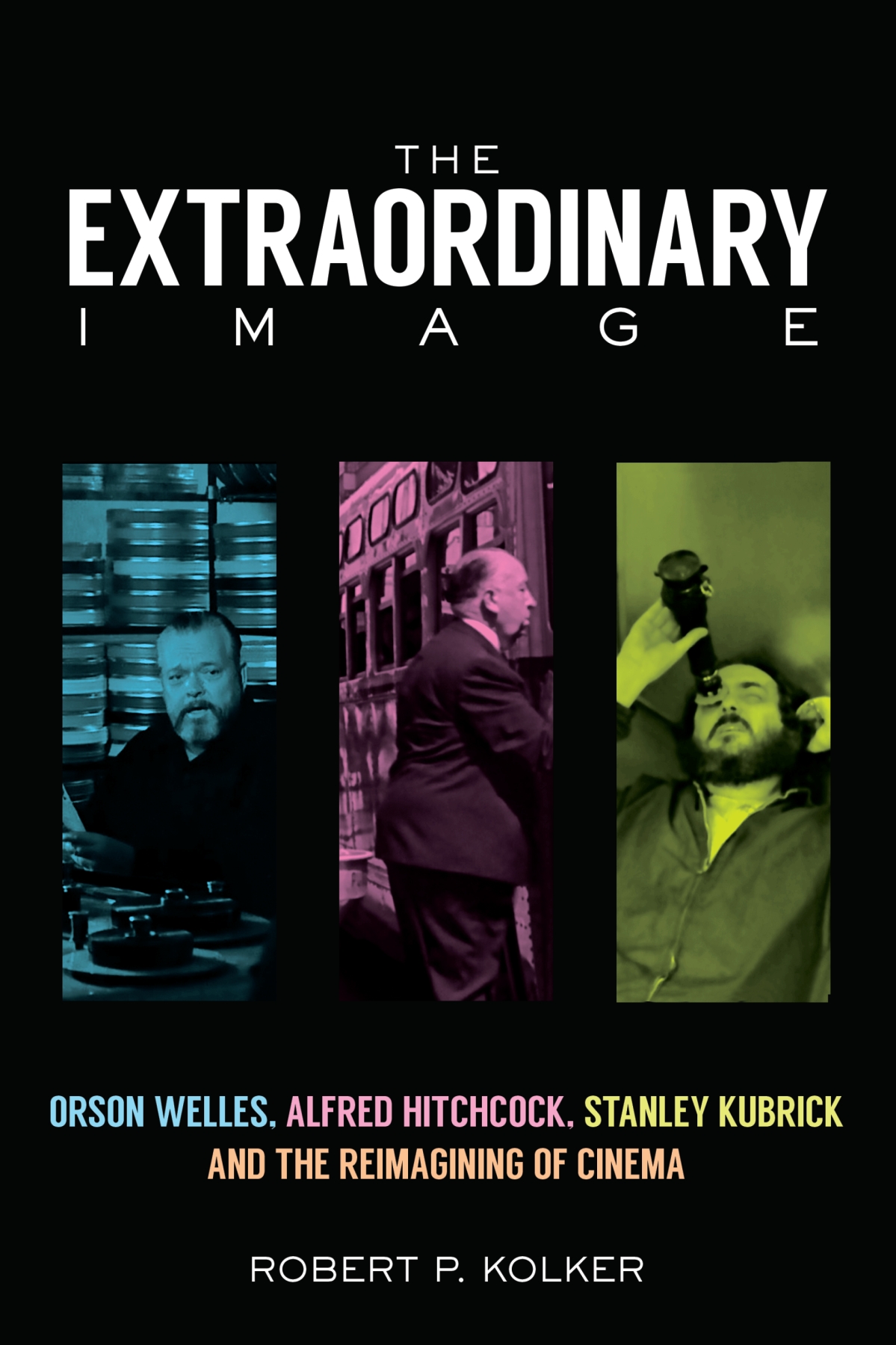
The Extraordinary Image
The Extraordinary Image
Orson Welles, Alfred Hitchcock, Stanley Kubrick, and the Reimagining of Cinema
Robert P. Kolker

Rutgers University Press
New Brunswick, New Jersey, and London
Library of Congress Cataloging-in-Publication Data
Names: Kolker, Robert Phillip author.
Title: The extraordinary image: Orson Welles, Alfred Hitchcock, Stanley Kubrick, and the reimagining of cinema / Robert P. Kolker.
Description: New Brunswick, New Jersey: Rutgers University Press, 2016. | Includes bibliographical references and index. | Inlcudes filmography.
Identifiers: LCCN 2016012316| ISBN 9780813583099 (hardcover: alk. paper) | ISBN 9780813583112 (e-book (epub)) | ISBN 9780813583129 (e-book (web pdf))
Subjects: LCSH: Motion picturesUnited States. | Welles, Orson, 19151985Criticism and interpretation. | Hitchcock, Alfred, 18991980Criticism and interpretation. | Kubrick, StanleyCriticism and interpretation.
Classification: LCC PN1993.5.U6 .K58 2016 | DDC 791.430973dc23
LC record available at https://lccn.loc.gov/2016012316
A British Cataloging-in-Publication record for this book is available from the British Library.
Copyright 2017 by Robert P. Kolker
All rights reserved
No part of this book may be reproduced or utilized in any form or by any means, electronic or mechanical, or by any information storage and retrieval system, without written permission from the publisher. Please contact Rutgers University Press, 106 Somerset Street, New Brunswick, NJ 08901. The only exception to this prohibition is fair use as defined by U.S. copyright law.
www.rutgersuniversitypress.org
The Imagination is not a State: it is Human Existence itself.
William Blake
The greatness of images isnt in the coherence of their narrative logic, or the nuance of their dramatic implications, but in their excessnot in what they mean but in what they are.
Richard Brody
Its funny how the colors of the real world only seem really real when you viddy them on the screen.
Alex in A Clockwork Orange
Contents
Alfred Hitchcock tries to catch a bus in North by Northwest
Orson Welles in F for Fake
Stanley Kubrick composes Jack Nicholson in the documentary about the making of The Shining
The darkness of The Magnificent Ambersons
The labyrinth of Orson Welless The Trial
Seducer and seductress in Stanley Kubricks Lolita
The threatening close-up of Uncle Charlie at the dinner table in Hitchcocks Shadow of a Doubt
Heywood Floyd reads instructions for the zero gravity toilet in 2001: A Space Odyssey
Some incarnations of Orson Welles: Harry Lime in Carol Reeds The Third Man; Mr. Arkadin; Hank Quinlan in Touch of Evil; Falstaff in Chimes at Midnight
Alex on display in A Clockwork Orange
The return of the gaze. Lars Thorwald sees Jeffries (and, by implication, the audience) in Hitchcocks Rear Window
Shadow of a Doubt: Young Charlie and Uncle Charlie in a film noir bar: And I brought you nightmares.
Tony Perkins in Psycho and The Trial
The sad, lost woman: Emma in Shadow of a Doubt
A triptych of despair and frustration. The end of Thompsons first visit to Susan Alexander at the nightclub in Citizen Kane
Deep focus in Citizen Kane. Young Charlies mother signs him over to Mr. Thatcher.
Mike OHara tells his story about the sharksto the sharks, in The Lady from Shanghai
Shootout in the hall of mirrors in The Lady from Shanghai
Akim Tamiroff as Jakob Zouk in Mr. Arkadin
Vargas wrestles with the acid thrower in Touch of Evil
The influence of Touch of Evil on Psycho
Wouldnt hurt a fly. The end of Psycho.
Hank and Tana in Touch of Evil
Titorellis room in The Trial
A triptych of the battle sequence in Chimes at Midnight
A high-angle shot in Shadow of a Doubt
Two corridors: Midge disappears, and the ghost of Madeleine appears in the hallways of Vertigo
This matter is best disposed of from a great height... over water. North by Northwest
Alex in the record boutique in A Clockwork Orange
A nightmare of an orgy in Eyes Wide Shut
Reconciliation in the toy store at the end of Eyes Wide Shut
Heywood Floyd delivers a boring speech in a conference hall on the moon in 2001: A Space Odyssey
Zieglers bathroom in Eyes Wide Shut
Dave sees himself old and dying at the end of 2001
Dave dismantles HAL while a prerecorded message on a television monitor informs him that HAL is in control of the mission in 2001
Elsters power over Scottie is seen in his dominance in the frame in Vertigo
Saving Alicia in Notorious
Trash talk in the latrine in Full Metal Jacket
Mein Fhrer, I can walk! The Nazi reborn in Dr. Strangelove or: How I Learned to Stop Worrying and Love the Bomb
I have heard it before.... Levinsky and the seashell in The Immortal Story
Its not hot. Its cold. Aunt Fanny breaks down in The Magnificent Ambersons
Scottie and Midge discuss their relationship in Vertigo. The high-angle extreme close-up of Midge speaks volumes.195
The surreal allegory of the camps in Welless The Trial
Apocalyptic fornication: Major Kong rides the bomb to Doomsday in Dr. Strangelove
The last sequence of Barry Lyndon: a ceremony of accounting and loss
My thanks to Marsha Gordon, who read the manuscript more than once and helped give it form and coherence. Any lapses in these pages are mine alone.
Nathan Abrams, my colleague in Kubrick, read the proofs with a sharp and knowing eye.
David Wyatt, a steady intellectual companion, was a source of ideas, encouragement, and good humor. Parts of this book were directly influenced by his work.
Many thanks to Marilyn Campbell at Rutgers University Press and Joe Abbott, who copyedited the book with an acute eye.
Leslie Mitchner, my editor at Rutgers, saw the potential of The Extraordinary Image when it was only an idea. She supported, corrected, and pressed me to realize that potential.
Movies are about making images and editing them into stories. Editing is an art. Image making, as its root meaning suggests, is about imagination. For me, the most important thing about a movie, often secondary even to its story, is the image: what filmmakers show us and what we make of what we see. The French director Jean-Luc Godard made a pun about the images in his films: Ce nest pas une image juste, cest juste une image: Its not a perfectly right image; its just an image. Godards pun, a disingenuous act of modesty from a filmmaker whose images (and editing) in the 1960s changed the look of film worldwide, contains some useful wisdom: if what we see when we look at a film is just an image, and most films are made of perfectly ordinary images, just images, we tend to look through them at the story they tell. And this is what most directors want to happen. I just want to tell a good story, they will say if pressed. But what happens if a director creates une image juste, a perfect, precise, extraordinary image, even, as Richard Brody suggests, an excessive image. John Ford made extraordinary images. His compositions of westerners riding between the crags of Monument Valley create an imaginary vision of the countrys past, an indelible representation of a history that exists only in Fords films. Other directors have flashes of extraordinary image making, moments of visionary greatness. Robert Altmans anti-Ford western
Next page

